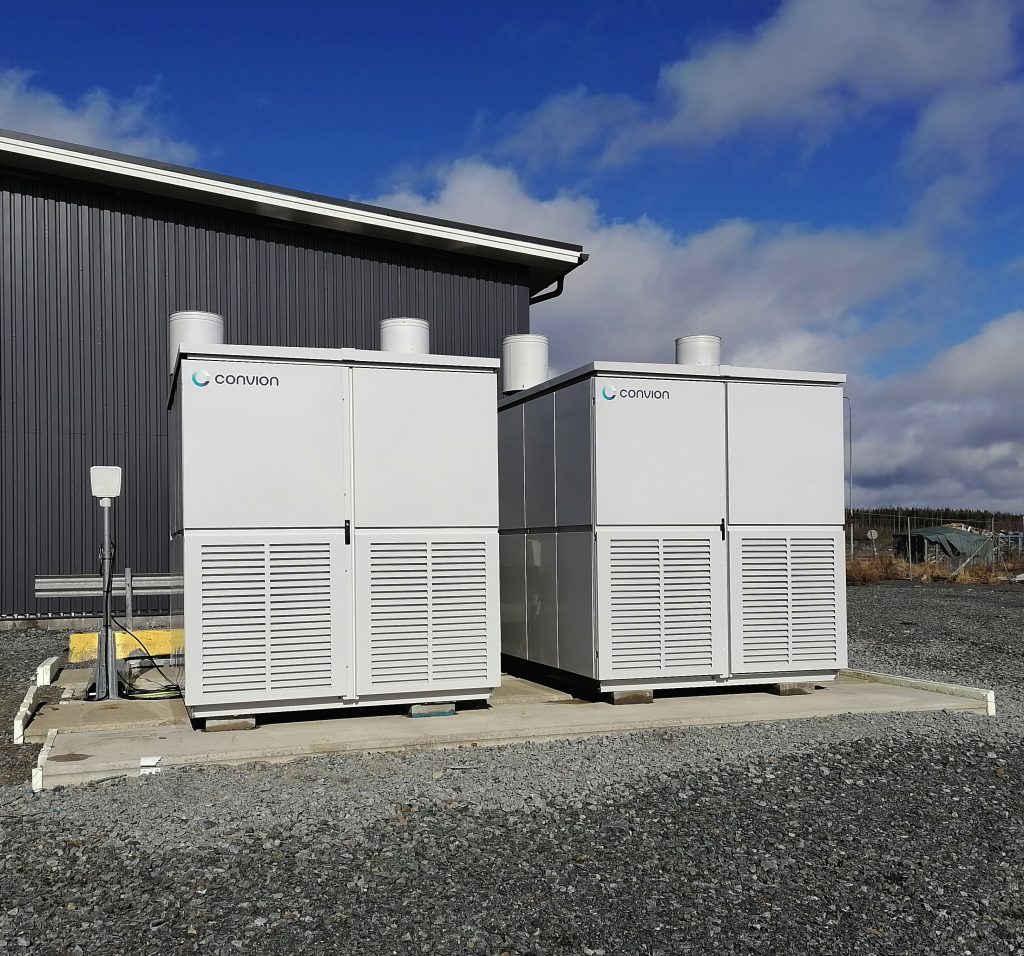
Lempäälän Energia’s unique LEMENE Energy Community project is like a national grid in miniature size. Convion’s C60 fuel cells play a major role in this smart micro-grid capable of self-sufficiency.
Lempäälän Energia’s energy community, LEMENE, is a key project of the Ministry of Economic Affairs and Employment, completed in 2019. LEMENE is an energy community in the Marjamäki industrial area that produces, stores and distributes electricity and heat locally. The energy system also includes a gas distribution network.
“LEMENE enables an energy-sharing economy in the area, because energy use, production and losses can be optimised centrally between the users. But electricity distribution to the end users still requires Finnish regulations to be developed, with energy communities recognised as part of an electricity distribution system,” says Development Manager Mikko Kettunen from Lempäälän Lämpö Oy.
Solutions suitable for isolated operations like LEMENE would be ideal in industrial site in sparsely populated areas. They could produce, for their own use, electricity from primarily renewable sources at low cost and high reliability.
C60 is ready for commercial phase
Experiences gathered with Convion’s C60 fuel cell systems in LEMENE have been very positive. The product is now ready for the commercial phase.
“LEMENE is a valuable reference to us. It represents a direction in which the entire energy system is going, that is, smartly controlled distributed systems that combine different technologies,” says Convion CEO Erkko Fontell.
99% availability with fuel cells, and 60% efficiency
From a technological viewpoint, LEMENE’s micro-grid is like a national grid in miniature size, where various electricity production types each play a role. Production and consumption must be balanced at all times, otherwise the frequency and electricity quality will be compromised.
In a distributed energy production model, the dependable C60 fuel cell system that produces electricity at a steady rate make LEMENE reliable, which, for example, solar energy solutions cannot guarantee.
“So far, in the LEMENE project’s first field installation, C60 has achieved 99 per cent reliability in a 7,000-hour test run,” says Fontell.
The C60 fuel cell is based on Convion’s own, unique system technology and cells made by the Estonian Finnish company Elcogen. C60 produces electricity at 60 kW and heat at about 25 kW. The electricity production efficiency is 60 per cent, which is the best available in the market in its category.
Unique megawatt industrial scale
LEMENE has a total of 13,000 ground-mounted solar panels on two separate fields, producing a maximum of 4 MW of energy. In addition to the solar panels, LEMENE’s two Convion C60 fuel cells are run at full power, and any excess energy is stored in large batteries.
“The batteries or energy storage enable LEMENE to operate in isolation, because they can even out the naturally varying levels of renewable energy. The batteries can store some 3 MWh of electricity, an amount which could meet the electricity needs of some 400 detached houses for about one hour,” says Mikko Kettunen.
Electricity production is supplemented either with a gas-fired power plant or by obtaining electricity normally from the national grid, but only when it is necessary. Conversely, local electricity production can, if necessary, support the national grid.
LEMENE is, even by international standards, a unique project in a number of ways.
“I have not come across any other micro-grid in the megawatt category that combines electricity, heat and gas,” says Lempäälän Energia CEO Toni Laakso.
Mr Laakso is particularly proud of the network’s reliability. The micro-grid has proved to operate steadily and reliably.
“With the fuel cells and batteries, we can ensure uninterrupted electricity distribution to consumers, even though most of the electricity is produced with solar energy, which is by nature an intermittent energy source. There is obviously plenty of renewable energy out there, but we must also ensure that there is a steady stream of electricity even when it cannot be produced by renewable means. This is something we have succeeded in.”
LEMENE is also connected to the national grid and is part of the balance power market.
Platform for new technology experiments
LEMENE acts as a platform for various technological experiments. For example, one C60 fuel cell is used in the micro-grid the usual way, while the other is connected to the same direct-current bus bar with the battery storage. This means that the direct current produced by the Convion C60 fuel cell system can be stored directly in the battery to reduce transformer losses.
In the future, also green hydrogen could be produced in LEMENE. Convion is currently developing high temperature electrolysis for industrial scale hydrogen production, based on Convion’s unique system technology and solid oxide cells. Mikko Kettunen says that using hydrogen as a fuel would enable the use of fully renewable energy in LEMENE.
“We see great potential in hydrogen. Hydrogen produced with renewable energy is one solution to the challenges posed by the energy transition, once the price of hydrogen begins to be competitive with fossil fuels,” says Kettunen.
For more information about the LEMENE, please visit the project’s web site.
